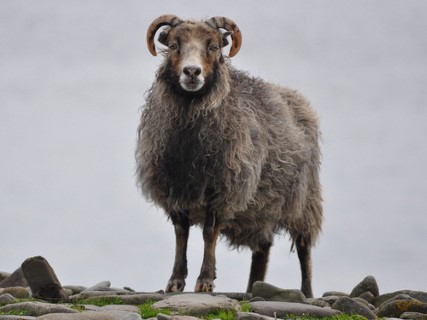North Ronaldsay sheep, a small and rare breed belonging to the Northern short-tailed group, are characterized by their unique diet and adaptation to a specialized seashore environment on their native island. These sheep have remained virtually unchanged over time, preserving their primitive and fine-boned characteristics.
One of the most distinctive features of North Ronaldsay sheep is their diet, which primarily consists of seaweed. This specialized feeding behavior has contributed to their ability to thrive in their coastal habitat.
In terms of size, mature ewes of this breed rarely exceed 25 kg (55 lbs), while rams typically weigh about 30 to 35 kg (66-77 lbs). Despite their small stature, North Ronaldsay sheep are hardy and well-suited to their environment.
These sheep adapt well to mainland management practices, including conservation grazing, making them valuable for ecological restoration efforts. While rams are typically horned, ewes may exhibit various horn configurations, including being horned, polled, or scurred.
The wool of North Ronaldsay sheep varies in color, with virtually any shade possible. It is generally considered to be of fair fineness, although some kemp may be present. Rams of this breed develop a distinctive mane and beard of coarse hair, adding to their unique appearance.
Despite their rarity, efforts are being made to conserve the North Ronaldsay breed, with approximately 3,700 of these sheep still found on their native island. Through careful management and conservation initiatives, these unique sheep continue to play a vital role in both cultural heritage and environmental stewardship.
